May 15, 2025
Post-Tire Swap Checklist for Calgary Drivers
You have swapped your winter tires — ✅
The sun is out and the roads are clear — ✅
Time to forget about tires until fall? Not quite.
Even after your seasonal tire change, a few quick checks can keep you safer, improve your vehicle’s performance, and even extend the life of your tires.
This simple post-tire swap checklist will help Calgary drivers like you stay road-ready — and show how TireSwaps takes your tire change and repair to the next level.
Why Post-Swap Maintenance Matters
Tire swaps are more than just a change in tread — they are a key part of seasonal safety and vehicle care. While TireSwaps handles the hard part, there are a few things every driver should monitor after installation, especially in the first few weeks.
Here is why:
- Even professionally mounted tires may need a re-torque after a few days
- Calgary’s variable spring temps can affect tire pressure
- Damage or alignment issues might surface once you start driving more frequently
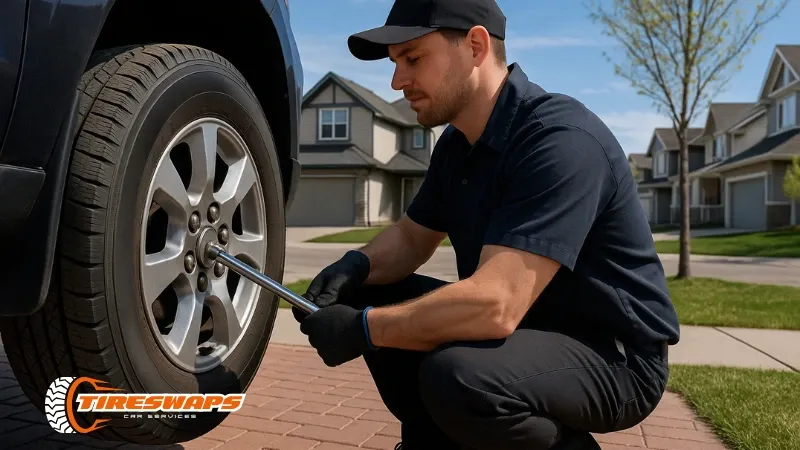
Your 7-Point Post-Tire Change Checklist
Use this guide to ensure your tires — and your car — are in top shape after a seasonal swap:
1. Check Tire Pressure After 3–5 Days
Tire pressure can fluctuate as rubber settles and as weather shifts. Proper pressure ensures:
- Better fuel efficiency
- Even tread wear
- Improved handling and braking
You can find the correct PSI in your vehicle’s manual or inside the driver’s door. Do not rely solely on dashboard sensors — check with a reliable pressure gauge.
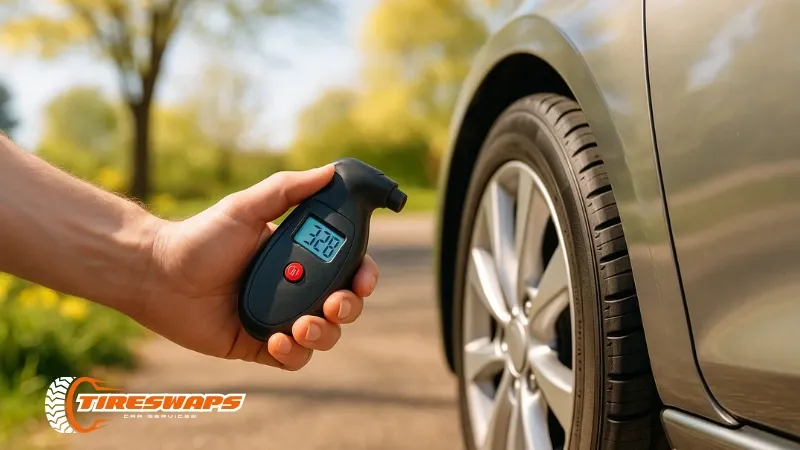
2. Re-Torque Lug Nuts After 50–100 km
Lug nuts can loosen slightly after driving on freshly mounted wheels. This is a normal and expected part of tire replacement in Calgary, especially with changing temperatures and road conditions.
At TireSwaps, we torque to spec during every installation — and we recommend having your lug nuts checked again after about 100 km.
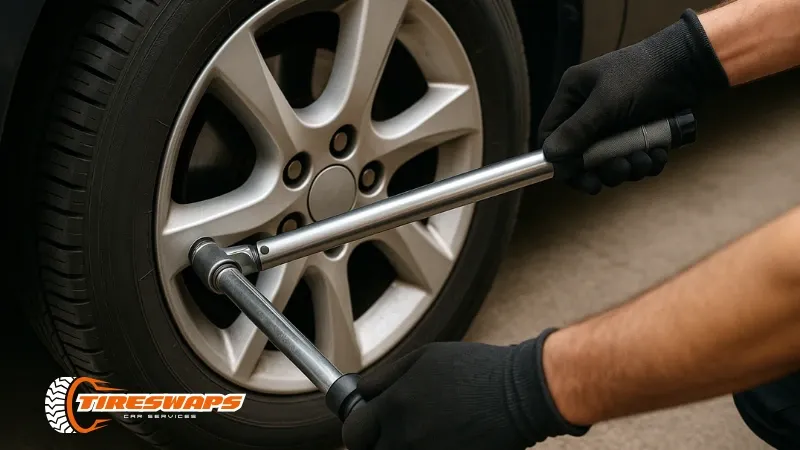
3. Inspect for Vibrations or Pulling
Once you are back on the road:
- Are you feeling unusual vibrations in the steering wheel?
- Is the vehicle pulling to one side?
These could indicate wheel imbalance or alignment issues — both of which can cause premature tire wear.
If something feels off, do not ignore it. Book a tire service and repair appointment near you to catch small issues before they become big ones.
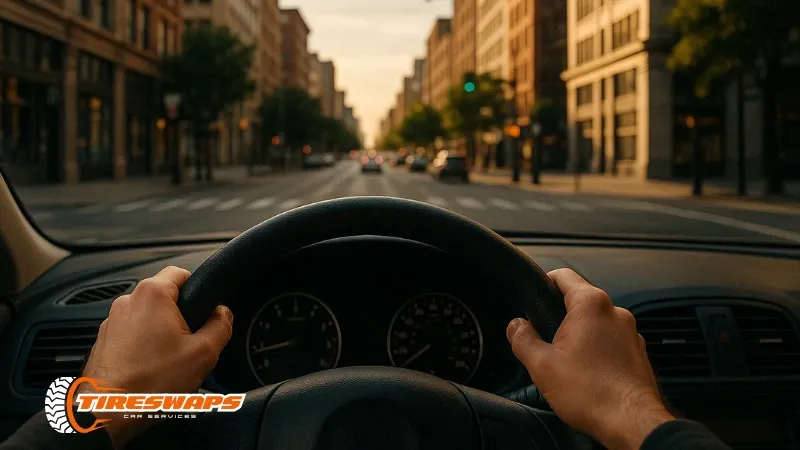
4. Check for TPMS Alerts
Many newer vehicles have Tire Pressure Monitoring Systems (TPMS) that may need a reset after your tire change. If you see a TPMS light:
- Check that all tires are at correct pressure
- Confirm your sensor is synced (some cars need manual resets)
- Contact your technician if it stays on
TireSwaps technicians can guide you on TPMS resets if you are unsure what your vehicle needs.
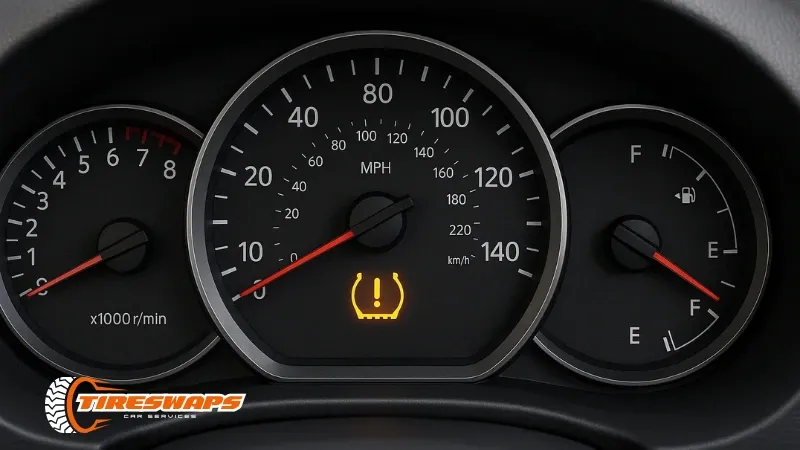
5. Monitor Tread Wear Patterns
Over the next few weeks, check that tread wear is even across each tire. Uneven wear may point to:
- Misalignment
- Worn suspension components
- Over- or under-inflation
We recommend doing a visual check monthly — or ask your TireSwaps tech during your next visit.
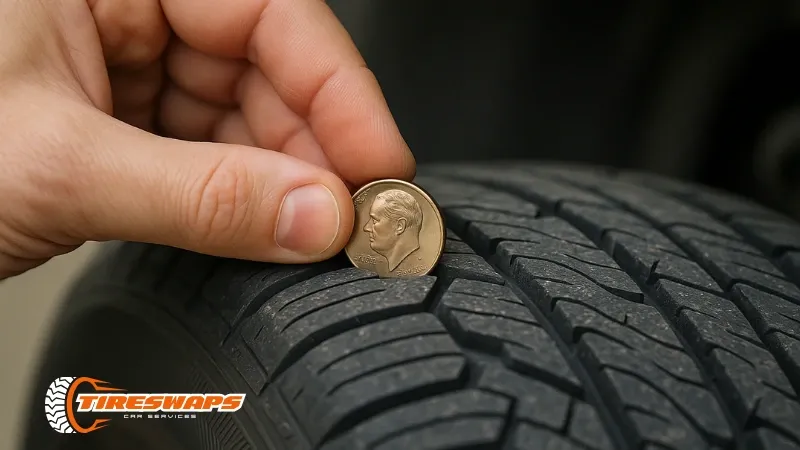
6. Listen for Noise Changes
A sudden increase in road noise could mean:
- Tires are over-inflated
- Tread is wearing unevenly
- There’s a mechanical issue starting
Some noise is normal after a swap, especially if switching from winter to summer tires — but anything persistent or new deserves attention.
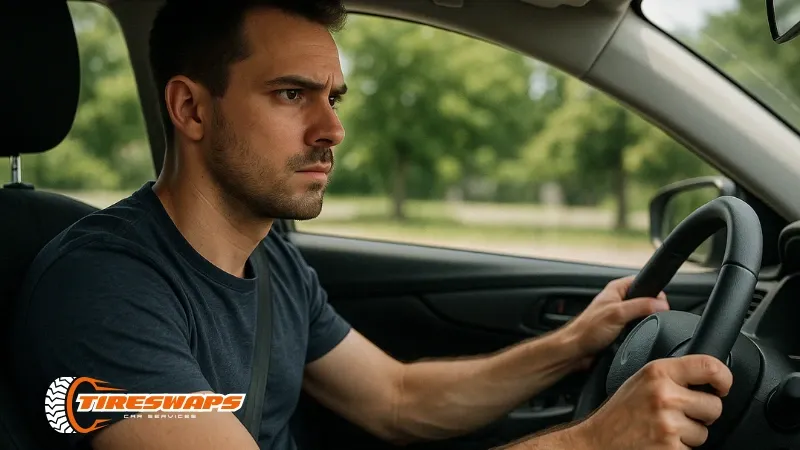
7. Keep an Eye on Handling in Wet or Warm Conditions
Your tires should feel responsive, especially during cornering or braking. If handling feels loose or sluggish:
- Recheck tire pressure
- Inspect for damage or unusual wear
- Consider if your tires are well-matched for spring driving conditions
Still not sure? A quick check from a TireSwaps technician can give you peace of mind.
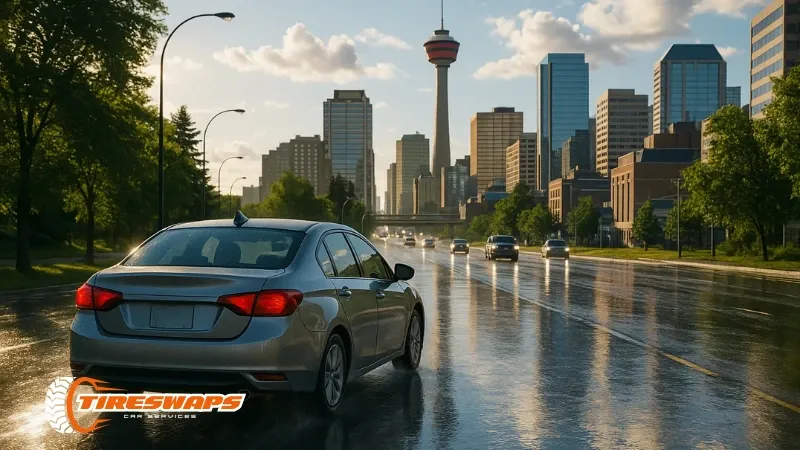
Why TireSwaps Makes Post-Swap Maintenance Easy
At TireSwaps, our goal is not just to change tires — it has to help you drive confidently all season long. That is why we include:
- On-site tire inspection for wear, cracks, and aging
- Torque and safety checks at every visit
- Booking reminders and follow-ups post-install
- Honest advice — no pressure, no upselling
Our team understands Calgary’s roads, weather, and vehicle habits. Whether you are in the city or on the edge of the ring road, we show up on time, fully equipped, and ready to help — in under 60 minutes.
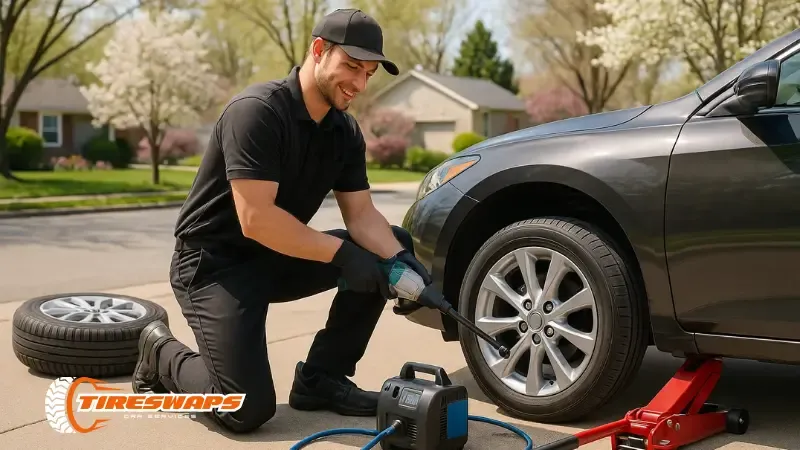
Post-ChangeFAQs: Quick Answers for Calgary Drivers
- Q: Do I really need to re-torque my wheels?
A: Yes — it is one of the most important safety steps after a tire change. Loose lug nuts can lead to serious damage.
- Q: What if I notice pulling after my tire swap?
A: It could be alignment-related. TireSwaps can inspect the tires for irregular wear, and we will let you know if further work is needed.
- Q: Can I drive with my TPMS light on?
A: It is not ideal. It may mean a tire is under-inflated or the sensor was not reset. We can help troubleshoot.
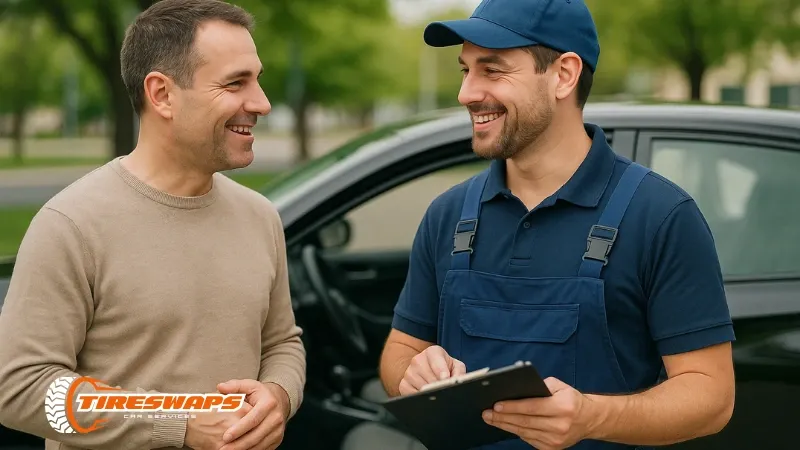
Final Thoughts
Getting your seasonal tire change is a big step toward spring safety — but the work does not stop there. Following this simple checklist can prevent wear, improve performance, and give you peace of mind every time you hit the road.
With TireSwaps, you do not just get a quick installation — you get reliable, local support from a team that knows Calgary driving.
Need to schedule your next tire change in Calgary or want a follow-up check? Book online 24/7 at tireswaps.com/booking or call/text us at +1 (587) 602-7934 with any questions!



 By Randy Faust
By Randy Faust



